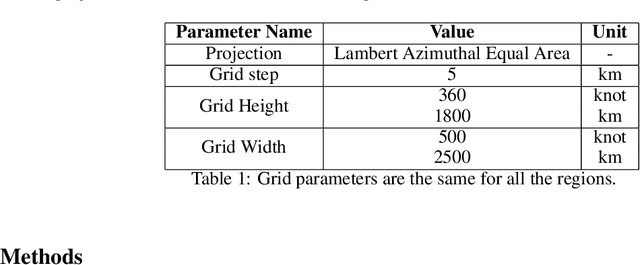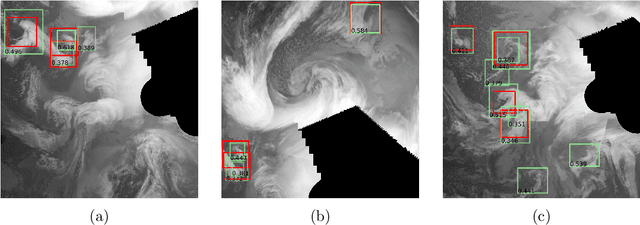Mikhail Krinitskiy
Data-Driven Short-Term Daily Operational Sea Ice Regional Forecasting
Oct 17, 2022



Abstract:Global warming made the Arctic available for marine operations and created demand for reliable operational sea ice forecasts to make them safe. While ocean-ice numerical models are highly computationally intensive, relatively lightweight ML-based methods may be more efficient in this task. Many works have exploited different deep learning models alongside classical approaches for predicting sea ice concentration in the Arctic. However, only a few focus on daily operational forecasts and consider the real-time availability of data they need for operation. In this work, we aim to close this gap and investigate the performance of the U-Net model trained in two regimes for predicting sea ice for up to the next 10 days. We show that this deep learning model can outperform simple baselines by a significant margin and improve its quality by using additional weather data and training on multiple regions, ensuring its generalization abilities. As a practical outcome, we build a fast and flexible tool that produces operational sea ice forecasts in the Barents Sea, the Labrador Sea, and the Laptev Sea regions.
Machine learning methods for the detection of polar lows in satellite mosaics: major issues and their solutions
Nov 09, 2020



Abstract:Polar mesocyclones (PMCs) and their intense subclass polar lows (PLs) are relatively small atmospheric vortices that form mostly over the ocean in high latitudes. PLs can strongly influence deep ocean water formation since they are associated with strong surface winds and heat fluxes. Detection and tracking of PLs are crucial for understanding the climatological dynamics of PLs and for the analysis of their impacts on other components of the climatic system. At the same time, visual tracking of PLs is a highly time-consuming procedure that requires expert knowledge and extensive examination of source data. There are known procedures involving deep convolutional neural networks (DCNNs) for the detection of large-scale atmospheric phenomena in reanalysis data that demonstrate a high quality of detection. However, one cannot apply these procedures to satellite data directly since, unlike reanalyses, satellite products register all the scales of atmospheric vortices. It is also known that DCNNs were originally designed to be scale-invariant. This leads to the problem of filtering the scale of detected phenomena. There are other problems to be solved, such as a low signal-to-noise ratio of satellite data and an unbalanced number of negative (without PLs) and positive (where a PL is presented) classes in a satellite dataset. In our study, we propose a deep learning approach for the detection of PLs and PMCs in remote sensing data, which addresses class imbalance and scale filtering problems. We also outline potential solutions for other problems, along with promising improvements to the presented approach.
 Add to Chrome
Add to Chrome Add to Firefox
Add to Firefox Add to Edge
Add to Edge